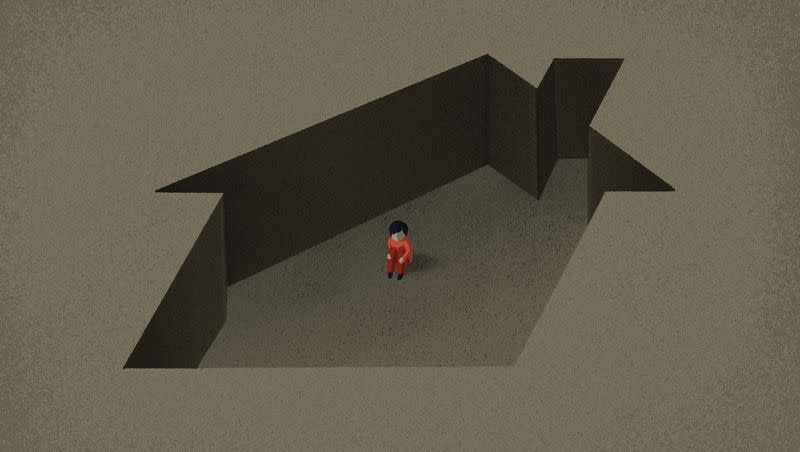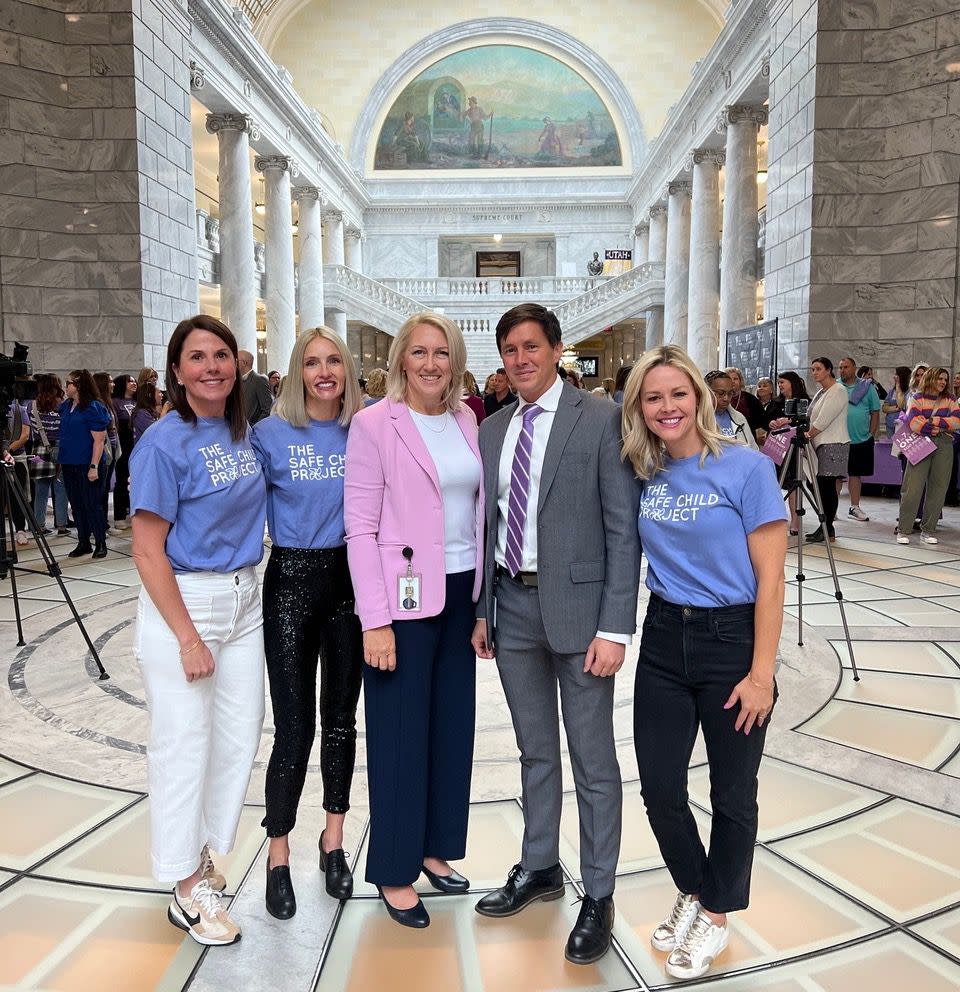Opinion: Why child sexual abuse is one of society’s most pervasive and protected problems

Recently I spoke with a sheriff in a rural, southern Utah town. He donned a thick brown canvas coat to block the too-cold wind that would undoubtedly hit us both when we walked outside.
I asked him about a topic few feel comfortable discussing — child sexual abuse. His interlocked, calloused hands opened and his head shook as he responded, “Everyday. I see those cases everyday. And we don’t talk about it. It makes it worse.”
In those few words, this former Marine, who had likely seen more than his share of difficulty in the world, captured the reality of one of society’s most pervasive and protected problems.
“Pervasive” because in Utah, 1 in 7 children will experience sexual abuse before the age of 18. That’s higher than the national average. And that number accounts for touch-only-abuse. It does not account for imagery, video or other materials — so the number of occurrences is likely low. Most occurrences are between the ages of 7 to 13.
And even at those young ages, the consequences can, and often do, last a lifetime.
For some sticky reason, victims of this crime often carry the load of guilt, shame and stigma — meanwhile perpetrators are “protected” because the very shame the survivor feels can keep them from talking about it. And 91% of the time, the child knows and “trusts” the perpetrator.
Related
Outcomes bear out that very struggle. Child sexual abuse can follow an individual into adulthood and is listed as a key factor in extreme long-term difficulties including homelessness, substance abuse, suicide, inability to develop meaningful relationships, drop-out rates, incarceration, trafficking, etc.
These long-term problems cost the state of Utah $1 billion annually.
The cost, monetary and not, for the state, for our families and for individuals is too high.
And because of that, our nonprofit policy group has formed our latest project — The Safe Child Project — dedicated to preventing child sexual abuse in Utah.

This year, we are working with the Utah Legislature, private donors and the public to ensure that children and families can access resources to help prevent, or stop, this type of abuse.
And, lucky for Utahns, in 2014, the Legislature passed a law that recognized that our families and children may have access to a sexual abuse prevention curriculum, available in schools.
Similar in form to the school “maturation” program where parents are invited to join, preview the curriculum and learn how to discuss a difficult topic with their kids, the abuse prevention curriculum is 30-90 minutes annually for kindergarten to sixth graders. It is meant to help children understand their “uh-oh” feeling, help them identify five trusted adults they can tell if something is amiss, and ultimately, to help parents understand how to keep their kids safe.
It’s easy, age-appropriate, family-supported education.
That said, as of 2024, only 11% of our families can currently access abuse prevention education. We can do better. We need 100% of families to have access to these resources. And that’s what we’re asking the Legislature to do.
This idea of safety preventions is not new to Utah schools. They teach a lot of measures including earthquake drills, drug abuse awareness and anti-bullying. “Stop, drop and roll,” is one catchy-phrase taught to most of the 74.4 million U.S. children to prevent them from death or serious injury by fire — which happens at about the rate of 1 in 647 children.
But out of bullies, drugs, burns and earthquakes, none happen to our children at the same 1-in-7 rate as child sexual abuse.
And with a rate like that, every one of us loves someone or is someone who has experienced abuse. The list of survivors is long and extremely varied.
A dear friend and her sisters, whose father was a prestigious businessman, experienced sexual abuse repeatedly by their grandfather.
A local Rabbi was abused for a decade, from the age of 8, by his female nanny.
A school board member in southern Utah found out her husband’s cousin had abused all of his own daughters — a discovery made only when one daughter spoke to her religious leader as she filled out an application for an LDS mission.
A legislator who said he’d been assaulted as a child, in a field on his way to school. And he never told. Until now.
Child sexual abuse knows no socioeconomic class. It respects no relationships. It knows no gender.
And we have mistakenly believed that there is no way to stop this. We have empowered perpetrators by not talking about this. By not looking for solutions. By believing there is nothing to be done.
We were wrong. And we are changing this.
Emily Bell McCormick is founder of The Policy Project — a nonprofit that creates movements in order to forward healthy, long-term policy. They successfully implemented The Period Project and The Teen Center Project. She and her husband and five children live in Salt Lake City.

